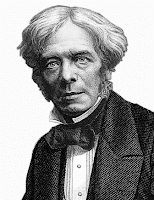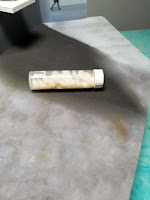Week 3: Robotics + Art
 |
| Michael Faraday |
 |
| Nicolas Tesla |
I am really interested in Robotics with the Artificial Intelligence, cyborg. The most recent and popular cyborg is "Sophia" I believe. This is a good example that demonstrates how Art contributes to Robotics as well. The look of Sophia is almost identical to a western woman, and that makes Sophia a better cyborg. Nowadays, Robotics
 |
| Sophia |
Professor Victoria Vensa mentioned about the movie "Blade Runner" during her lecture video, however I want to talk about the movie "I Robot". The summary of the movie is in the future the industry and society are focused on the robotics and robots were overworked by human. Robots themselves started to have some feelings and the robots try to dominate the humanity in the future. As you can see at the picture below you can see the robots are looking identical to each other and I felt It might be one of the examples that Walter Benjamin explained. The negative effect of mechanical reproduction about the work of art. They lost their uniqueness and "aura". In the movie all the cars and structures are almost identical as well.
 |
| I Robot |
This week's topic was really interesting for me. Since I am considering engaging in intelligent robot industry and make my robot for my own in the future. After this week's lectures and studies, I could understand more about art, robotics, and their effects to each other. As they can benefit each other, they could hurt each other as well.
BENJAMIN, WALTER. “Walter Benjamins The Work Of Art in the Age of Mechanical Reproduction.” 1936, doi:10.4324/9781912284894.
Relating the Rapidly Changing Present to the Distant Past as Far as Book History Is Concerned, www.historyofinformation.com/narrative/index.php.
“San Francisco Robotics Society of America (SFRSA).” San Francisco Robotics Society of America (SFRSA), www.robots.org/.
“Sophia.” Hanson Robotics Ltd., www.hansonrobotics.com/robot/sophia/.
“Michael Faraday (1791-1867).” Royal Institution: Science Lives Here, www.rigb.org/our-history/people/f/michael-faraday.
History.com Staff. “Nikola Tesla.” History.com, A&E Television Networks, 2009, www.history.com/topics/inventions/nikola-tesla.

Hello Chanhoe,
ReplyDeleteAs an electrical engineering student I also agree that Michael Faraday played a big role in electromagnetic which contributed to successful in robotics. Robots are not just simple machine but are very high technology. I hope one day we will make some kinds of robot like Sophia!
I am strongly interested in taking the movie, named "I robot", to give people an understanding of the robot. I could understand it very well when I read your post. As a person who is learning engineers, I was shocked to learn that the relationship between robot and art is a mutual help. I hope that the robot and art continue to help each other.
ReplyDelete